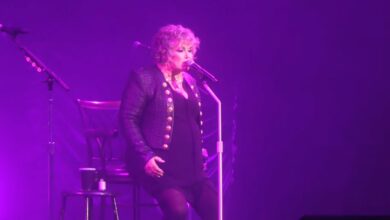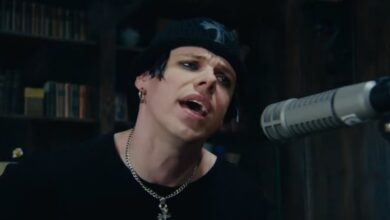The Most Unforgettable “Bohemian Rhapsody” Flashmob That Took Over Paris
Here’s the thing about truly great flash mobs: they don’t just surprise you—they reorganize your whole sense of place. One minute a Paris side street is clinking plates and café chatter; the next, it’s a full-blown rock opera with a grand piano in the square, harmonies pouring out of apartment windows, and a pint-sized guitar hero leaping onto the instrument like it’s a launchpad. That was the scene when pianist-producer Julien Cohen staged what the internet promptly crowned “the most INSANE ‘Bohemian Rhapsody’ flashmob you will ever see,” a meticulously plotted ambush of Queen’s 1975 epic that turned everyday passersby into wide-eyed witnesses to a communal thunderbolt.
The opening gambit was pure theater: three singers appeared at a first-floor window and, without preamble, sent those glassy opening lines—“Is this the real life? Is this just fantasy?”—floating into the street like a flare. Down below, Cohen sat at a Shigeru Kawai, the kind of grand you expect to see in a recital hall, not resting on cobblestones. A small knot of onlookers paused, then grew, phones rising like periscopes. Within moments, more voices joined from unexpected perches—a balcony here, a storefront there—so that the crowd couldn’t quite triangulate where the sound was coming from, only that it was gathering mass.
Flash mobs are at their best when they feel like a city conspiring with its own residents. This one unfolded like a treasure hunt. A countertenor’s bright ray of tone cut through the air from one direction; a pop choir answered from another; somewhere behind the piano a second guitar locked into a gallop. The spatial choreography created a moving surround-sound effect, like the famous “opera” section of “Bohemian Rhapsody” had been exploded across the block. People in café chairs twisted in their seats to follow the voices, whirling as if drawn by invisible stage directions.
Cohen, who’s quietly become Paris’s pied piper of surprise concerts, was the calm center of the storm. He staged, coordinated, and played ringmaster at the keys, laying down the song’s dramatic spine while nodding cues to singers and camera ops. The cast list he pulled together reads like a pop-up festival: lead vocals by flamboyant art-pop singer Mickey Callisto; electric guitars handled in part by young UK phenom Olly Pearson; the countertenor solo by Michael Konesaki; and a rotating cadre of opera-trained voices who gave the big choral stack its cathedral glow. It looked spontaneous; it was anything but.
If the plan was to start with charm and escalate to delirium, the guitar did the heavy lifting. Pearson—ball cap, shades, the unteachable swagger of someone who knows the solo is in their pocket—vaulted onto the piano lid and tore into Brian May’s lines with grin-inducing precision. The audacity of the staging—a literal guitar hero perched on a concert grand—wasn’t just for spectacle; it turned the square into a 360-degree stage, giving everyone a clear sightline to the song’s kinetic heart. Even die-hard Queen purists in the crowd couldn’t help it: their eyebrows went up, then their phones followed.
The vocal design, meanwhile, was a geeky joy. “Bohemian Rhapsody” is a labyrinth of textures—choir-stacked hahs and gallileos, bar-room head-banging, quasi-operatic call-and-response—and the team assigned each motif a place and a face. Balcony singers became a human pipe organ. Street-level belters traded lines with upper-story voices like neighbors swapping secrets across a courtyard. When the “Beelzebub” exchange arrived, it felt less like a cover and more like a live-action rebuild of Mercury’s studio sorcery, reconstructed by air and stone. The crowd didn’t just listen; it tracked the parts as if they were constellations.
Callisto’s lead vocal glued the puzzle together. He didn’t try to impersonate Freddie; he chased the song’s theater—moving from fragile confession to campy bravado and finally to that full-throated catharsis that makes strangers sing in each other’s faces. His charisma played beautifully against the city itself: at one moment he was framed by shuttered windows and wrought-iron railings; the next he was shoulder-to-shoulder with the audience, handing off the “nothing really matters” refrain like a heirloom. If you squinted, you could see Mercury’s spirit hovering in the smiles, not in mimicry but in shared delight.
Part of the thrill was how many micro-stories the cameras captured. A father tilted his child so she could see the balcony choristers; a woman with a “Bohemian Rhapsody” tattoo laughed in disbelief when she realized the song inked on her skin was erupting, three-dimensional, all around her; a table of friends abandoned their tartes to join the pocket-headbang at the “So you think you can stone me” break. The editors knew exactly what they had: kinetic cuts that kept the geography clear, jumping from window harmonies to piano-top pyrotechnics without losing the map.
Then there was the mix—crystal enough to carry the choir’s shimmer, honest enough to leave in the street’s rumble. That balance is rare in live street performance. You could hear the strings of the piano bite in the rock section, the rasp of pick attack on the guitars, and the little gasp before a high note in the opera stack. It felt tactile, unpolished in the best way, like a record sleeve you can feel under your fingers even as it spins. Credit the production team for threading the needle between “street magic” and “studio-grade memory.”
The internet moved quickly. Within a day, write-ups were pinging around music sites and mainstream outlets, each retelling the same breathless sequence: a quiet square, a window chorus, an airborne guitarist, a city caught singing. Consequence noted the clip’s immediate viral surge on YouTube after Cohen posted it; Parade and Yahoo amplified the “you have to see this” factor to casual readers who might only know the song from car-karaoke and biopic trailers. For once, the headline hype matched the footage.
It wasn’t just numbers; it was reach. The video rippled across Instagram and TikTok with the kind of cross-generational stickiness only a few songs possess. “Bohemian Rhapsody” is a multiverse in six minutes—ballad, opera, headbanger, coda—and the clip served each audience its favorite portal. Grandma smiled at the piano intro; teens clipped the guitar jump for edits; singers stitched the stacked harmonies. Millions of comments piled up with the same chorus line: “Freddie would’ve loved this.”
What makes this particular flash mob special isn’t simply its scale; it’s its literacy. The arrangement honored the record’s architecture while exploiting the city’s verticality. The windows became natural reverb chambers; the cobbles gave the drums snap; the café umbrellas felt like stage rigging the city had installed decades ago for exactly this moment. And because each section of the song introduced a fresh reveal—a new singer in a doorway, a second guitar sliding into frame—the surprise kept refreshing. You never got ahead of it; it stayed one step more joyful than your expectations.
There’s also a soft power to it. For six minutes, a corner of Paris became a commons, stitched together by a piece of British rock that has, for half a century, belonged to everyone. Strangers harmonized with strangers. Shopkeepers leaned on doorframes and grinned at tourists who forgot to move. When the last chord dissolved and the crowd whooped, you could hear relief in the cheers—the sense that, just for a bit, the city remembered how to sing in public without permission. That’s the promise of a great flash mob: it licenses a neighborhood to be a choir.
Zoom in on the personnel, and you see why the execution felt effortless. Cohen’s piano was both conductor’s baton and safety net; Callisto’s lead navigated the song’s mood swings without breaking character; Pearson’s guitar heroics gave it a headline image the algorithm could understand in a single still frame. Behind them, the opera voices added color you rarely get outside a concert hall. On a technical level, it was a masterclass in assigning roles so that each performer looked and sounded like the best version of themselves at the exact moment the camera found them.
Media summaries often reduce these things to “feel-good viral moments,” but this one also reminded people how much craft hides beneath joy. Somebody had to map mic placement to window distance, balance street-level monitors against feedback from upper stories, time entrances so that camera swings captured faces instead of backs. Somebody had to get a grand piano into a square and tuned. And somebody—okay, several somebodies—had to rehearse those “Galileo” stacks until they snapped together in open air. The artistry isn’t just in the playing; it’s in the planning that lets spontaneity look inevitable.
By week’s end, the clip had become a cultural Rorschach. Music nerds praised the voicing; casual fans marveled that a song from 1975 could still stop a city; parents forwarded it because their kids are in choirs, or because their kids are in bands, or because their kids need a reason to practice. Publications from classic-rock blogs to general-interest sites covered it, not because flash mobs are new, but because this one managed to feel like a long walk with a familiar friend—you knew every turn, and still the view took your breath away.
When the final “any way the wind blows” drifted across the plaza, applause broke like weather. The camera caught the grins, the dazed laughter, the reflexive high-fives between strangers who had just been in a band together for the briefest, best of times. Paris does spectacle better than most cities—parades, fashion, football madness—but this felt different. It felt handmade, neighborly, as if the buildings themselves were in on the trick. In a year stuffed with headlines, this was six minutes of unqualified good news set to the most theatrical rock song ever written.
And maybe that’s why it hit so hard online. “Bohemian Rhapsody” has a way of turning a crowd into a choir and a choir into a community—Live Aid, stadium sing-alongs, late-night bar closings. Cohen and company bottled that lightning in a place where community already lives, then handed the bottle to the internet. What people saw wasn’t just Paris or Queen or a kid shredding on a piano lid; it was proof that a city block can still become a stage, and that, sometimes, the best seat in the house is whichever one you’re already in.
If you’re keeping score: a grand piano on cobblestones, thirty-odd musicians, a lead who knows how to play to windows and sidewalks, a camera team with a dancer’s sense of timing, and a crowd ready to believe. That’s how you earn a headline with the word “insane” in it and actually deliver. And that’s how a street performance in Paris makes the world stop scrolling and start singing. As summaries go, “the coolest thing you’ll see today” is usually an overpromise. This time, it’s just a description.





